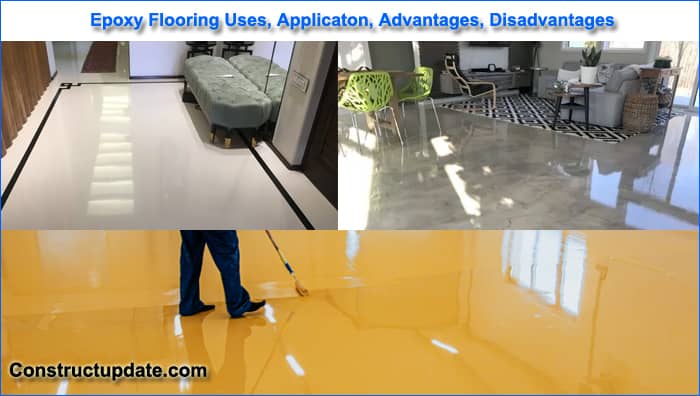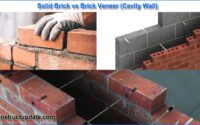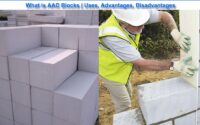All about Epoxy Flooring | Epoxy Flooring Application Process
Flooring for commercial and industrial buildings frequently uses epoxy floor coverings. Concrete floors are frequently covered with epoxy coatings to provide a high-performance, smooth, and robust surface that can withstand heavy loads and persist for years.
A lot of manufacturing facilities, warehouses, and commercial structures employ epoxy floors to create secure spaces for staff, inventory, and equipment.
The two components that makeup epoxy flooring are resins and hardeners. One of the solutions for resinous flooring that makes flooring seamless is this one.
Application Process of Epoxy Flooring:
Step 1. Before applying the epoxy, prepare the surface
Step 2. Sweeping and mopping the flooring
Step 3. How to Apply Epoxy: Use an appropriate epoxy primer to coat the floor.
Step 4. Epoxy grout should be used to fill all cracks and holes.
Step 5. The first coat of epoxy paint is applied
Step 6. Before putting the last coat of epoxy floor paint on, finish sanding and filling.
Step 7. Apply the final coat.

Uses of Epoxy Flooring
Epoxy flooring is often used in industrial settings, hospitals, and garages, as was already noted. Many homes are choosing to install it in kitchens, bathrooms, and living spaces as it has grown in popularity.
Epoxy flooring will survive for years after installation because it is so strong, cleanable, and resistant to pressure and wear.
Advantages of Epoxy Flooring:
- Cost Friendly
- Easily Adjustable
- Damage Resistant
Cost Friendly
- One of the key concerns for every property owner is cost. The price is only somewhat more affordable than alternative strong floors, such as hardwood floors.
- The cost of installation varies depending on the available space and the needs of each individual.
- It is less expensive than even concrete, especially in light of the fact that painting and regular maintenance are not required because of chipping.
Easily Adjustable
Once you choose a professional installation, he or she might be able to modify your epoxy floor based on your preferences, such as whether you want a shiny, vividly colored floor or a honed stone surface.
Damage Resistant
- The epoxy flooring is resistant to abrasion, wear, cracking, peeling, and corrosion. It can withstand environmental deterioration and chemical harm from acids.
- With dried epoxy, moisture resistance is possible. On its own, the epoxy could not be UV resistant.
- However, because of the makeup of the components in epoxy coating, adding it will help the floor stay longer and make it scratch-resistant.
- Epoxy flooring can be made more abrasive and scratch-resistant by adding urethane and a number of additional top coats.
- Additionally, it can produce petrol for long-term health. The hot healed or cured floor will be less heat resistant than the epoxy floor.
Disadvantages of Epoxy Flooring
Despite all of its benefits, epoxy flooring has a few drawbacks that you should take into account before deciding to install it in your house. Even though epoxy is frequently regarded as a high-end flooring material and can endure for decades with proper maintenance, it has several disadvantages.
Installation
The difficult installation procedure for epoxy flooring is unquestionably a drawback. The surface must be adequately prepared before the epoxy coating is applied. Since all oils and grease must be removed before redoing a garage floor, this can be very difficult.
When it comes to putting epoxy flooring, every detail counts, and you must meticulously go by all the guidelines. The humidity level is one area where you must pay particular attention because it might affect the floor and hasten its ageing.
Slippery
- Being a seamless surface and typically being non-porous, epoxy flooring can become slick, especially if it’s wet or oily.
- To lessen or possibly completely eliminate the slippery problem, aluminium oxide can be added to the epoxy itself. Addition of silica sand to the finish is an alternative.
Cure Time
Simply put, it will take a few days for your epoxy flooring to properly cure after installation, and it is generally accepted that the longer the curing time, the more durable the floor will be. Remember that some epoxy materials need a week to completely dry and cure.
Epoxy Flooring Doesn’t Breathe
Epoxy flooring has the ability to trap any moisture vapour rising from the concrete slab because it doesn’t breathe.
Requires Repairs
- Epoxy flooring has the drawback of not being a permanent solution and requiring reapplication on a regular basis despite being incredibly resilient.
- Despite the fact that epoxy is incredibly resilient, wear and tear as well as the possibility of chipping and cracking still affect the surface. A chip or crack could cause the epoxy surface to peel away and expose wider swaths of the floor if it is ignored.
Removal
Epoxy flooring can be difficult to take off once it is installed. In fact, it’s usually advisable to employ a contractor to handle the job as they’ll have the equipment and know-how to remove the surface securely while safeguarding the concrete foundation.
Durability
Epoxy flooring is exceptionally durable, highly water-resistant, and resistant to peeling and cracking. In fact, one of the key factors contributing to epoxy’s popularity as a flooring option is its longevity.
Is Epoxy Flooring Cost-Effective?
- How much does epoxy flooring cost is one of the first queries heard. With epoxy flooring, there are two costs to take into account: the materials and the installation.
- Materials – Epoxy flooring costs between $30 and $150 a gallon and is purchased by the gallon because it is initially a liquid. There are many different product lines available, but you should anticipate paying more for combinations that contain more epoxy.
Installation
For about $600, you can buy a kit if you want to do a DIY job. However, we advise at the very least having a professional estimate the project.
Can I Install Epoxy Flooring Myself?
You can install an epoxy floor as a do-it-yourself project, but we don’t advise it. You’re better off hiring a flooring specialist if you haven’t worked with epoxy before because it’s not as simple as you might believe.
Can You Put Epoxy Flooring Over Plywood?
- Yes, theoretically. Epoxy is just a coating, so theoretically it can cover any surface.
- Due to the fact that epoxy floor coatings are intended to be applied on concrete, it is not really a smart idea. You might wish to think about painting plywood with latex or acrylic latex paint.
How Long Does it Take to Install Epoxy?
- It actually depends on the kind of epoxy system you choose, but if you’re installing epoxy in your garage, plan on the job taking at least two days.
- Remember that before installing the epoxy, the surface must be prepared. This can entail making repairs or even grinding the concrete with a diamond wheel.
- After the epoxy has been put, you must refrain from touching the surface in any way for 48 hours, including walking on it. Your new garage floor should be available for your automobile in around 5 days.





